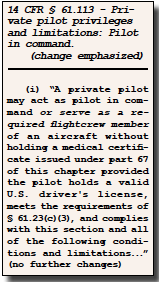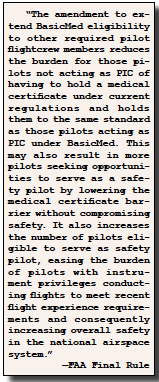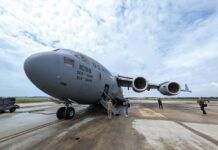The article, “Safety Pilot Rules” (March 2020 IFR), talked about the ins and outs of safety pilot roles, qualifications, responsibilities, and logging. Under 14 C.F.R. §91.109(c) safety pilots are considered required crewmembers. The minimum requirements for acting as a safety pilot are (1) a private pilot or higher certificate, (2) the applicable aircraft category and class ratings, and (3) an appropriate current medical certificate.
Safety pilots could, but need not, be acting as the pilot in command (PIC) of the flight in which they are required crewmembers. Those who act as PIC must, as usual, meet all PIC requirements, including currency and appropriate endorsements.
If they do and the pilots agree the safety pilot will be acting as PIC, the safety pilot is permitted to log the time the flying pilot is under the hood, using the pilot in command column of their logbooks.
Safety pilots who cannot meet PIC requirements can act as safety pilots but they may neither act as pilot in command, nor may they log the time as PIC. They may log the time as SIC if they choose.
Medical Requirements
As the FAA Chief Counsel first said back in 1977, “a safety pilot during simulated instrument flight … is a required pilot flight crewmember… [who] would have to have an appropriate current medical certificate.” Under §61.23(a)(3) the “appropriate medical certificate” is “at least a third-class medical certificate … except when operating under the conditions and limitations set forth in §61.113(i)” (BasicMed).
The FAA Extension, Safety, and Security Act of 2016 (FESSA), which gave us BasicMed also introduced an anomaly. BasicMed, as originally written, only applies to private pilot privileges when acting as pilot in command. The ridiculous consequence of this is that a safety pilot who is in command and ultimately responsible for the flight could rely on BasicMed. But a safety pilot who was a subordinate crewmember needed at least a third class FAA medical certificate.
Amending the Rule
On November 22, 2022, the FAA published a Final Rule in the Federal  Register. The main purpose was to increase the medical requirements for commercial balloon pilots who, as of May 23, 2023, will need to have a second class medical certificate to carry people or property for hire. Tucked away in the Final Rule was a nice holiday gift—the removal of the safety pilot anomaly. As of December 22, 2022, §61.113(i) reads as shown below.
Register. The main purpose was to increase the medical requirements for commercial balloon pilots who, as of May 23, 2023, will need to have a second class medical certificate to carry people or property for hire. Tucked away in the Final Rule was a nice holiday gift—the removal of the safety pilot anomaly. As of December 22, 2022, §61.113(i) reads as shown below.
Restating the requirements with the amendment, the minimum requirements for a person to act as a safety pilot in a powered aircraft now are (1) a private pilot or higher certificate, (2) the applicable aircraft category and class ratings, and (3) a current third class medical certificate or BasicMed. That’s better.





